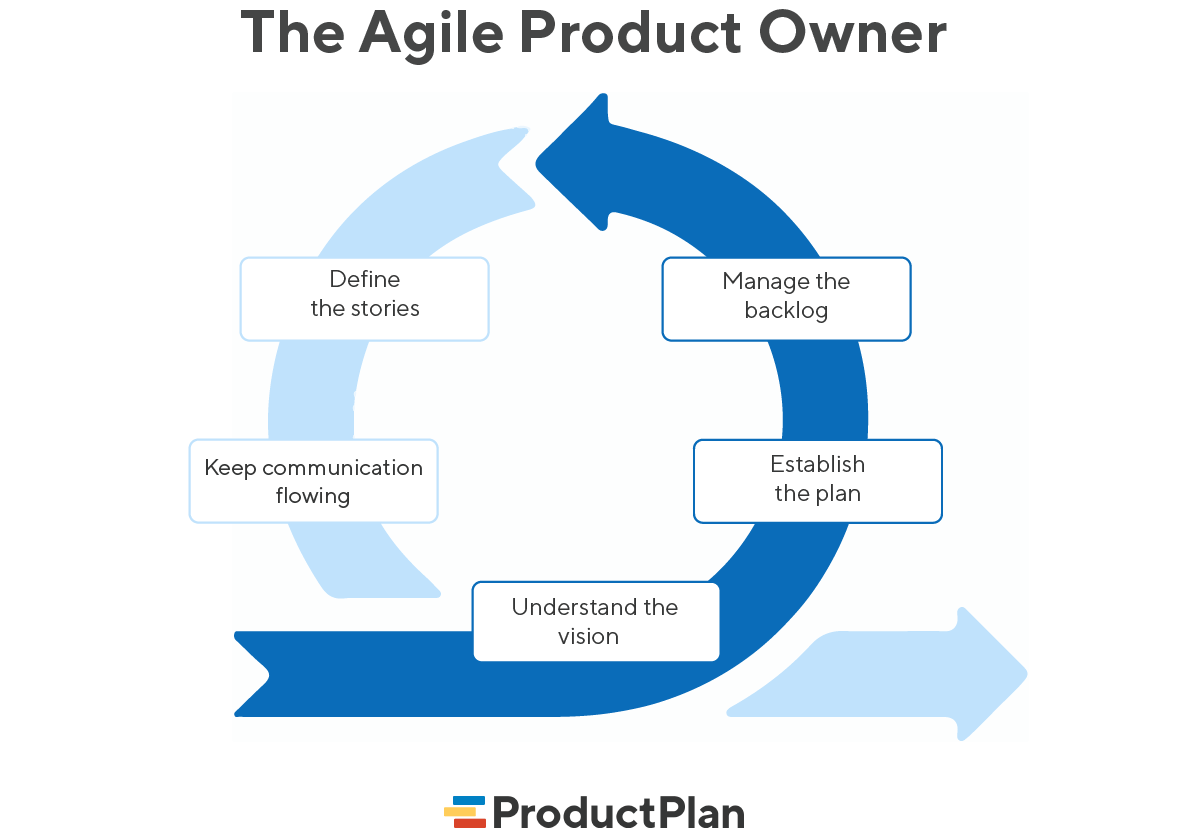What is an Agile Product Owner?
In an agile organization, the product owner is responsible for prioritizing and overseeing the development team’s tasks and making sure the company derives as much value as possible from the team’s work.
You can think of an agile product owner as the project management lead in the product’s development. When they receive the high-level goals and plans from product management, product owners will translate that strategy into stories and other individual tasks for the product backlog. Product owners serve as the bridge between the product’s strategic and tactical plans.
Product owners can be members of the product management team, but at most companies, they are part of development.

What are an Agile Product Owner’s Responsibilities?
Agile product owners have many responsibilities—some are strategic while others are tactical. Here are some of their key roles.

1. Understand the vision
To convert a product strategy into an effective tactical plan, product owners must first gain a clear understanding of the strategy and the company’s vision for the product.
For example, they will need to learn about the user persona that they’re building the product for. Additionally, they need to understand the specific challenges the product is designed to solve. Only by understanding the market need for the product can they ensure the development team’s work reflects that plan.
2. Establish the plan
Product owners are also responsible for prioritizing the development department’s work. It will require balancing various factors, including what the product roadmap has to say about the product’s priorities, the team’s resources and budget, and the amount of time they have until the company expects to have a product ready to ship.
3. Manage the backlog
The product owner is also responsible for managing the product backlog, which is where the team keeps its ongoing list of task-level items. In an agile organization, which breaks its development work into short-term sprints, the product owner is also responsible for taking items from the main product backlog and adding them to the sprint backlog before each sprint.
4. Define the stories
Part of a product owner’s role in maintaining the product and sprint backlogs involves defining stories: plain-language descriptions of small pieces of functionality that need to be built.
Product owners are also responsible for translating the product team’s vision into specific tasks for the developers to complete. As such, they’re in the best position to craft and edit product backlog stories to make sure they meet acceptance criteria, meaning they support the conceptual and technological plans of product management.
5. Keep communication flowing
Product owners also serve as a liaison between product management and development. They make sure each team understands the needs, limitations, and other realities of the other. A shared understanding ensures everyone stays informed on the product’s progress throughout the development process.
Want to keep learning more? Watch the Tying Roadmap Strategy to Agile Planning to learn how to connect your long term strategic plan with your agile backlog.
Related Terms:
Scrum agile framework / agile principles / sprint / story point / acceptance criteria